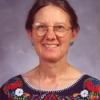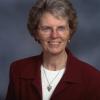After spending nearly three decades as a Maryknoll missionary in eastern Africa, Sr. Rosemarie Milazzo has spent the last five years serving as an international peacekeeper in Iraq. Inspired at the age of 75 to devote her life to peace work, Milazzo joined Christian Peacemaker Teams in 2007, first working with First Nations people in northern Canada and then spending three months in the Democratic Republic of the Congo before beginning her work in Kurdish Iraq.
It is increasingly vital to make the links between climate change, immigration, human trafficking, violence and political unrest. Was not Jesus about addressing controversial issues – systemic issues of poverty and injustice? Is caring for God’s creation and the human family really controversial? And if some believe it is – is this not the moral and soul issue of our time that Jesus invites us into?
Established to address the way women religious in the United States who were being sent to teach in Catholic schools were doing so without receiving higher education, the Sister Formation Conference became the Religious Formation Conference in 1954. Sixty years later, the movement that grounded a generation in liberal arts and even advanced theological training is readjusting its mission to fit the times. Formation is not a one-time event but an ongoing response to changes that lead to growth.
Three stats and a map - Images of Beijing and Shanghai’s all-encompassing smog are notorious at this point, but air pollution problems are hardly exclusive to China. There is more to the problem than breathing difficulties; air pollution causes premature death.
“I went to the woods because I wished to live deliberately, to front only the essential facts of life, and see if I could not learn what it had to teach, and not, when I came to die, discover that I had not lived."
We Sisters of Charity who live at the U.S.-Mexico border are in a holding pattern, ready and waiting for the next planes to arrive with immigrant families who have been detained in south Texas. The national news has latched onto the protests in one California town against busloads of immigrant families arriving for processing by federal authorities, but less attention has been focused on the generous outpouring of humanitarian assistance by people of faith in other communities.
I realized the other day that it was ten years ago this summer that I attended my first vocation retreat. It had become harder and harder to ignore the crazy idea that I should become a Catholic sister. After a few months of strong internal resistance, I temporarily left my single girl life in Portland, Ore., one weekend and drove three hours north to spend two days at St. Mary on the Lake, the regional headquarters of the Sisters of St. Joseph of Peace, outside Seattle.
In 1991, the Franciscan Sisters of the Immaculate Conception (SFIC) started adult literacy classes for communities of indigenous people in the mountain villages of Subic, Philippines, and now run a school for the younger generations. Their mission is to empower people of the Aeta tribes to live as equals with the rest of the community, not second-class citizens. Founder and overall coordinator SFIC Sr. Mary Francis Borje: “Our boarding school aims to help them preserve their culture."
Sr. Mary Evelyn Jegen, one of the co-founders of Pax Christi USA and the group's first national coordinator, died July 4 after a long illness. She was 86. In 1982, she became the third recipient of Pax Christi USA's Pope John XXIII Teacher of Peace Award.
Sr. Mary Germina Keneema is the executive secretary for the Social Communications Commission of the Archdiocese of Mbarara in southwestern Uganda and in June was appointed by the African Sisters Education Collaborative to be assistant coordinator for its leadership program in that country. She now coordinates the courses sponsored by the collaborative, recruits sisters to attend them and oversees finances.





